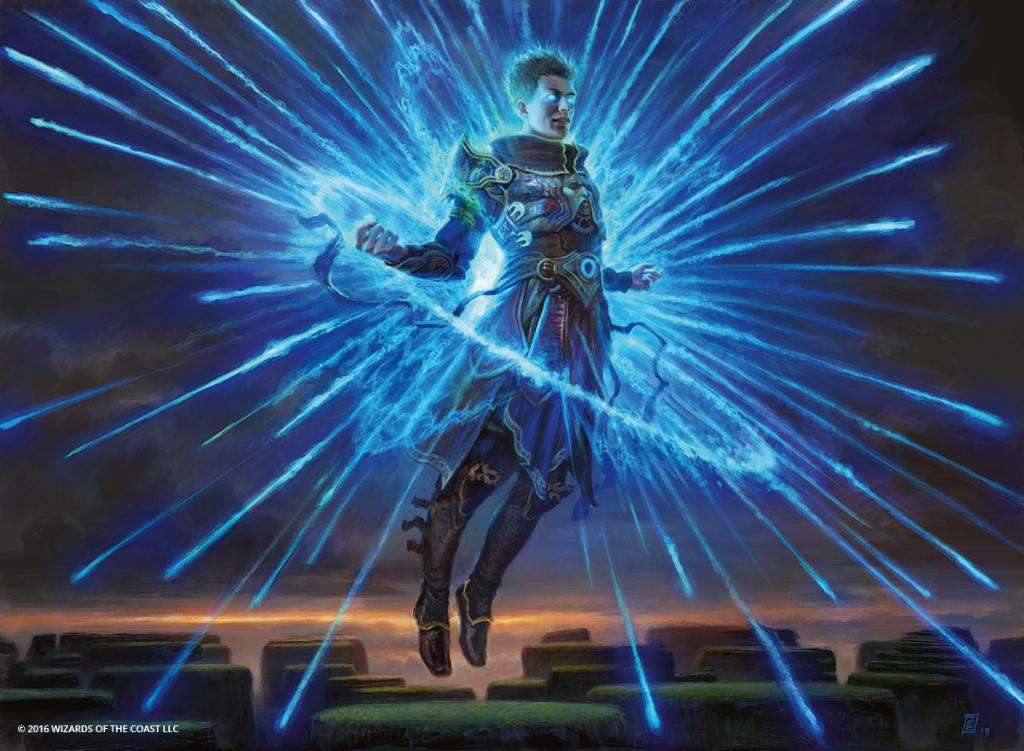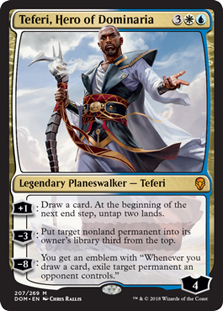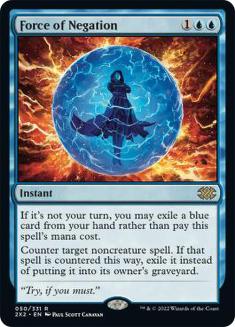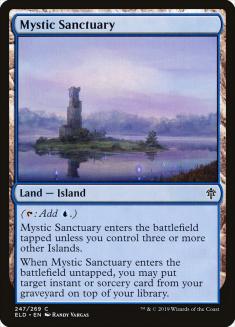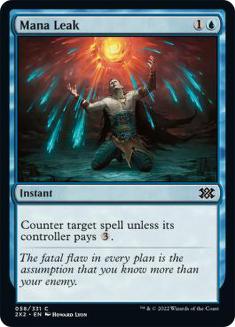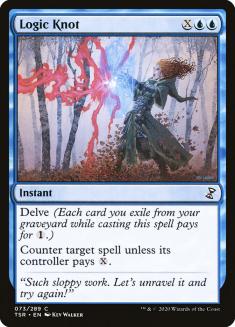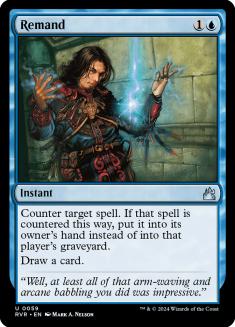Counterspell is coming to Modern, and at least one person here at Star City Games is, unsurprisingly, excited about it:

At his advanced age, Shaheen remembers the days when control was nearly always among the best decks in a given format, if not the dominant archetype. Those days are long gone, but Shaheen’s love of control is as strong as ever. So any time his beloved Islands get a little help in the day and age of planeswalkers and Lurrus of the Dream-Den, he’s there to pounce all over it.
To be fair, control decks have received significant help in the last few years with the printing of Teferi, Hero of Dominaria, Force of Negation, Archmage’s Charm, and the recently banned Mystic Sanctuary. And the fate of control decks has been much brighter in that time than it was before, when Modern was awash with linear strategies looking to end the game as quickly as possible.
But from where I stand, Counterspell isn’t going to drastically alter the status of control decks in Modern. It might’ve done so four or five years ago when the format was much less powerful, but we’re well past that point now. Such a grim assessment for one of the most iconic cards in Magic’s history may come as a surprise, but let’s make an honest evaluation of the card in the context of Modern in 2021.
The Strengths and Weaknesses of Counterspells
Counterspells get their power from their ability to trade effectively for your opponent’s cards. Removal spells match up poorly against threats that gain immediate card advantage, like Stoneforge Mystic or planeswalkers. On the other hand, discard spells trade for a card that your opponent spent no mana on, so they end up being poor tempo plays. Counterspells are the best form of disruption at trading in a way that is at least card- and tempo-neutral.
The downside of counterspells comes from their timing restrictions. You have to be able to cast them while your opponent’s spell is on the stack or they become useless. This means they lose a lot of value should you fall behind on the battlefield, since the threats that have already resolved are usually more pressing than those which haven’t.
This dichotomy means that counterspells have relatively high diminishing returns. If your deck is too dense with counters, any threats that sneak through are major problems, but there’s no form of disruption that makes you feel safer in the late-game.
Note that this assessment also explains the power of counterspells in the early days of Magic when threats were much less powerful. You had more time to answer threats that slipped through the cracks in your counter wall, so it made sense to load up more on counters because you were more likely to get to the late-game when they’re at their best.
But these days it’s hard to play too many counters, which is why we see more modal counterspells. Archmage’s Charm and Cryptic Command are staples of Modern because even when the counter mode isn’t relevant they won’t ever rot in your hand, but they’re still there to cement your advantage in the late-game.
Counterspell isn’t versatile enough to warrant significantly increasing the number of counterspells your Modern decks should play. There are still plenty of aggressive decks that will gladly overload your early removal and leave you with a fist full of counters as they attack for ten. That means Counterspell is going to compete for space with the existing cheap counters that see play.
Looking at the current metagame, there are three such cards that Counterspell will compete with: Mana Leak, Logic Knot, and Remand. So now let’s take a look at how Counterspell stacks up against each of these three cards.
Counterspell VS Mana Leak
Both of these cards are trying to accomplish the same thing in simply trading one-for-one, and do so at the same rate of two mana. The difference lies in their reliability. While counterspells are generally great to have in your hand as the game goes long, soft counters like Mana Leak lose a lot of value as your opponent makes more land drops and has mana to spare. On the other hand, Counterspell costing two blue mana makes it less reliable in the early-game, since you may not have the second blue mana or be forced to take extra damage from a shock land to get access to it.
So the question then becomes which side of the equation is more important. Which downside is more likely to cost you games? The answer to that comes from Archmage’s Charm and Cryptic Command. Control decks in Modern are built to utilize those powerful spells, and that means employing a lot of blue mana sources. So without even trying, casting Counterspell on Turn 2 shouldn’t be difficult. So in most instances I’d side with Counterspell over Mana Leak.
But if your deck isn’t playing Archmage’s Charm and Cryptic Command, there’s a real cost to stretching your mana. Shaheen is of the mind that the upside of Counterspell is worth it regardless, but I’m not so sure. Modern is a punishing format, and you need to interact early and often against the likes of Izzet Prowess and Jund Death’s Shadow. Taking a turn off in the early-game is going to be tough to overcome.
So while I think Counterspell is mostly an upgrade on Mana Leak, it isn’t an upgrade by that much. Most of the time they’re going to trade one card for one card at a price of two mana. Counterspell is more relevant late and Mana Leak is more relevant early. So the gap is the difference between those two, which is smaller than you think. Mana Leak, for all its pedigree, is far from a world-beater in Modern these days, and Counterspell isn’t outpacing it by all that much.
Counterspell VS Logic Knot
Logic Knot is the closest analog to Counterspell that we have in Modern today. With all the cheap spells and fetchlands, delve is easy to pay. But relative to Mana Leak, Logic Knot has opposite weaknesses. It’s the early-game when you’re mostly likely to be caught without a card or two in your graveyard to effectively cast Logic Knot, while in the late-game you’re more likely to have a full graveyard and spare mana to sink into the X cost.
In this way Logic Knot indeed parallels Counterspell more closely, but at that point Counterspell’s consistency takes over. You’re never going to get caught without adequate mana or cards in graveyard to cast Counterspell like you will with Logic Knot. So while the difference is small, I agree with Shaheen that I’m ready to retire Logic Knot as a playable Modern card when Modern Horizons 2 is released.
But in terms of Counterspell’s impact, it doesn’t matter that it’s obviously better than Logic Knot save for the potential impact of cards like Meddling Mage and Spell Snare. What matters is how much of an upgrade it represents for decks that are playing Logic Knot. And that difference is rather small. Logic Knot wouldn’t see play in the first place if it wasn’t reliable, so upgrading along that axis can only do so much. The bigger upgrade for Counterspell is in having lower diminishing returns.
Logic Knot often sees play in one or two copies because drawing multiples can deplete your graveyard and leave the later copies ineffective. Counterspell has no such issues. So we could very well see decks that previously played Logic Knot both upgrade to Counterspell and move up to the full four copies.
But on the balance this is a small upgrade in consistency for control decks. It’s not fundamentally lowering their curve or opening up another angle of attack. Counterspell represents a minor upgrade around the edges of these archetypes, which while helpful is hardly going to shift the balance of power in the Modern format.
Counterspell VS Remand
This is the most difficult comparison because Remand is so much more than the other cards. Mana Leak, Logic Knot, and Counterspell are straightforward in what they are trying to accomplish: a one-for-one trade. Remand is a zero-for-zero trade, since neither player ends up down any material when it resolves. Their spell goes back to their hand and remains a threat you have to keep in mind, and your Remand is replaced by a fresh card. It’s less of a counterspell and more of a pause button, telling your opponent to try again later.
And this difference in functionality is clear when you look at the decks in Modern where you most often find Remand. Right now the two most popular are Through the Breach and Five-Color Control. Both can function as control decks, so early interaction is valuable, but rather than a deck like Esper Control which is trying to run its opponent out of resources and win with its leftovers, these two decks are building towards powerful haymakers: Through the Breach and Emrakul, the Aeons Torn, or Bring to Light for a game-ending Scapeshift.
Therefore, these decks don’t need to answer every threat permanently, just for long enough to execute their win condition. Remand is perfect for strategies like this, because it explicitly buys you that time while also helping you draw through your deck so you find those win conditions consistently.
So yes, Remand can look weak in the late-game when your opponent has the mana to simply recast their spell. And sometimes countering their spell for a turn won’t be good enough to find your combo. But there are a ton of games where the extra card is critical to enacting your own gameplan, and that makes Remand more valuable in those decks. On top of that you have Remand being easier to cast, which is particularly important for Five-Color Control and its manabase.
Counterspell may be an easy upgrade on Mana Leak and Logic Knot, but Remand is a very different card, so you have to consider just how reactive your deck is before replacing it with Counterspell. And in most cases, I see Remand players staying put.
A Solid Role-Player
I expect Counterspell to see significant play in Modern. There are plenty of good homes for it already in the metagame with the proliferation of blue decks over the last few years, and it’s an upgrade on Mana Leak and Logic Knot. But it’s never going to do much more than what those cards do. They’re all one-for-one trades at the same rate. So it’s just a matter of increasing their consistency.
Playing Counterspell instead of Mana Leak doesn’t make you less vulnerable to fast draws out of Izzet Prowess. Nor does it protect you in the face of an Inquisition of Kozilek to force through a key Death’s Shadow. The same weaknesses that counterspells have had for years will remain present.
When I think of cards that made a major impact when released, I think of either cards that supercharged a deck’s synergies, like Lava Dart in Prowess, or cards that opened up new angles of attack for an archetype. Think Force of Negation, which has allowed control decks to aggressively tap out for a key threat without leaving themselves exposed.
When previous counterspells offer 80% or more of what Counterspell is doing, I don’t see an upgrade that’s going to upset the current Modern equilibrium. The better news, Shaheen, is that blue control decks are already good in Modern, and they don’t need a huge upgrade to stay good. The minor upgrade from Counterspell will certainly help, but don’t expect to register four copies at your next tournament and mow down the room. Those days are long gone.

